Weekly round-up: 25 - 31 March 2015
With the onset of the new month, there was a somewhat April-y flavour to the weather for the first part of the last week - sunshine and showers the order of the day as the prevailing cool (though often sunny) conditions on the back of a northerly airstream were replaced, slowly but surely, by a more westerly to southwesterly flow - breezy with some precipitation (including snow over the high tops) along with bursts of nice sun too.
More sunshine and showers followed on for much of the rest of the week - the winds mainly in the milder southwest (but becoming ever stronger for many as the weekend progressed and turning to the WNW). When the sun shone, it was rather pleasant, less so when the cloud and wind came and the rain drops fell. And, in parts, fall they did, in some quantity…
Its too early to really get in to the spring flow - it will be a traditionally staggered start, but glimmers of hope edge closer daily…
On the Isles of Scilly, over on St Agnes, the singing first-summer male Desert Wheatear remained at Porth Askin through until the afternoon of 26th - departing to pastures new overnight.
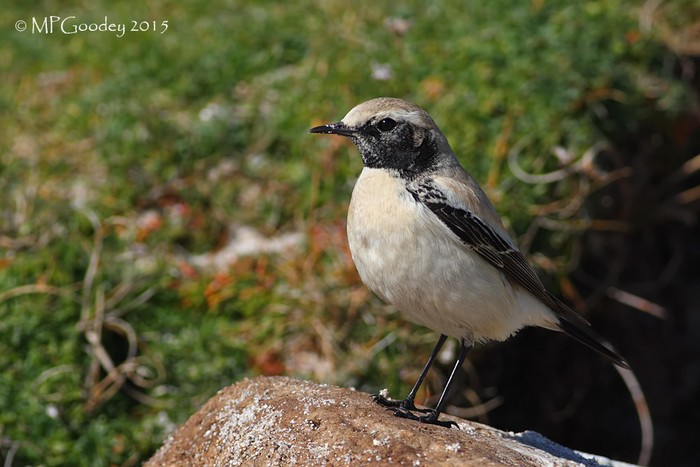
This fourth for the islands finds itself third in the list of seven March records in terms of length of stay - six days for the Agy bird which nestles it just behind the St. Agnes bird of 1976 (that stayed for eight days, to March 30th) and the Carnosre Point bird of March 1990, which lingered in Wexford for 11 days.
The other four March Desert Wheatears are made up of three two-day birds and a one-dayer as well.
The increasingly handsome moulting first-winter drake Harlequin continued to show himself well along the River Dee in Aberdeen through to March 31st - clocking up a stay of 86 days (and counting) in to the bargain. Since discovery in the first week of January, this delightful has barely disappointed anyone and with his progress towards some rather exquisite finery, there may still be some tempted towards northeastern Scotland before he departs. That is, of course the gamble…you wouldn’t want to be the first ones to dip…
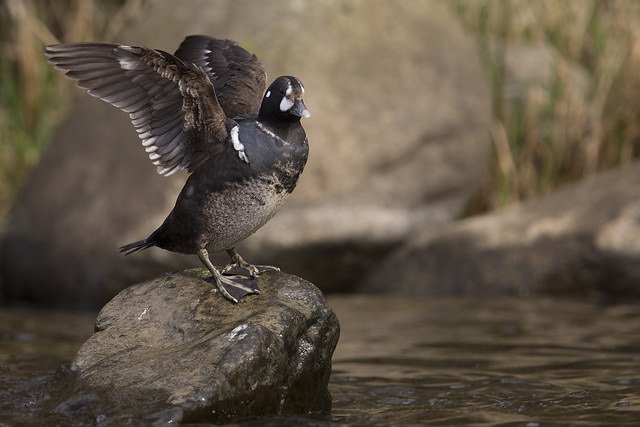
Rather more dowdy but just as rare is the female Harlequin at Brora, noted again off the Sputie Burn to 30th. She’s been around for 42 days, so for those with a penchant for “collecting”, the double Blue Streak has been offer for over a month now.
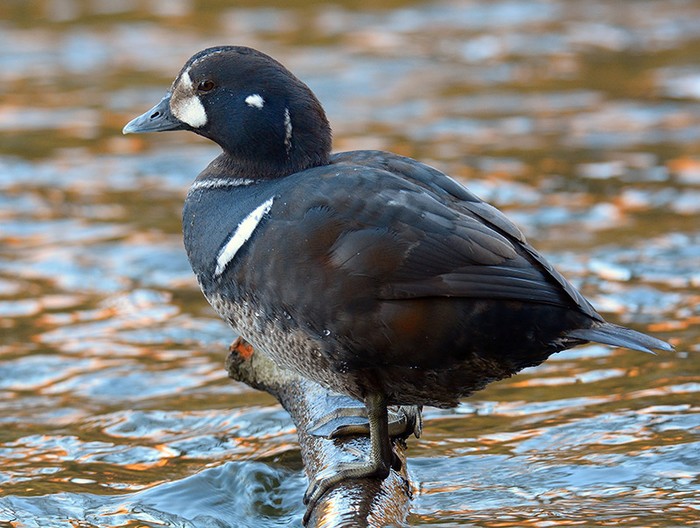
A trip with double Harlequin is a very good trip indeed…
With the last sighting coming on March 2nd, it seemed as though the drake Black Scoter had long gone from the coast of Northumberland - well, say not so it seems as the 26th brought news of a surprise reappearance at the north end of Cheswick Sands, the favoured spot for this individual which was first noted there on January 20th.
The winter’s second Black Scoter at Rossbeigh is seldom mentioned these days, but this popular Irish first was still sitting pretty off the Kerry coast to 31st.
Looking like a safe bet for the predicted April clear out was the American Coot on Loch nam Feithean, on the Balranald RSPB reserve on North Uist through to 29th at least.
With over 130 days on the clock since a mid-November arrival, this particular still very rare waterbird is within striking distance of the longest stay record - currently held by the Shetland bird of the winter of 2004/’05 (a total of 146 days in all). Will it manage to stick it out until mid-April and take the record? Or will the urge for departure to, goodness knows where, take over?
Can you feel the excitement mounting as we collectively ponder such things…?
Can you?
Keeping the late coming Totem Pole Duck admirers happier still up in Aberdeenshire were the half dozen or so White-billed Divers that continued to be seen from Portsoy between 25th-27th, with at least two remaining to 29th. Over on Orkney, the regular adult was at St. Maragaret’s Hope, South Ronaldsay to 30th with another again at Kirkabister, Mainland (Shetland) on the same date.
Elsewhere in Scotland, six Little Auks were seen from Aird, on Tiree (Argyll & Bute) on 26th and another headed past Pendeen Watch (Cornwall) on 31st while further out at sea, aboard the R.V. Celtic Explorer, Niall Keogh et al., managed to find a passing Leach’s Storm-petrel way, way out off the coast of County Cork on 25th.
Ireland also produced the only other single seabird worth mentioning this week - a Balearic Shearwater noted heading west of Carnsore Point (Co. Wexford) on 29th.
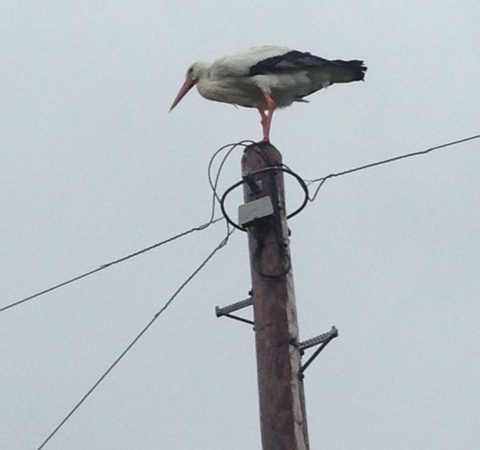
Perched atop a telegraph pole just inside the Norfolk border, at Earsham GP, a White Stork was seen on 26th - presumably the bird noted last week along the Suffolk coast.
The double dose of Denge Marsh Cattle Egrets stayed put in their favourite little corner of Kent until 31st with a trio of Great White Egrets in the same general area as well.
Elsewhere, numbers overall fell away quite markedly - despite six being counted at Shapwick Heath NNR on the Somerset Levels on 25th (with a singleton following at Catcott Lows NR on 26th and two at Tealham Moor on 27th). Another bird in the southwest was noted again in Brand’s Bay, Studland (Dorset) on 29th.
Two birds were seen together at Welney WWT (Norfolk) on 28th after one was noted again at Lakenheath Fen RSPB (Suffolk/Norfolk border) at the start of the review period. In north Norfolk, a single bird was seen heading out of the Glaven Valley, just south of Cley, at Bayfield on 29th.

Three lone Great White Egrets were in the Midlands - at Rutland Water (Leicestershire) on 25th, Summer Leys NR (Northamptonshire) on 27th and in Nottinghamshire, at Attenborough NR on 29th. The final birds of the (maximum) overall total of 21 birds were two that were noted at Burton Mere Wetlands RSPB (Cheshire) on 27th.
Back to the east Midlands, where the Glossy Ibis remained at Gonalston (Nottinghamshire) to 30th at least. That was one of four noted this week; the others still present at Tramore Backstrand (Co. Waterford), along the Ouse Washes RSPB (Cambridgeshire) also through to 28th and in flight again over Wat Tyler CP (Essex) on 31st.
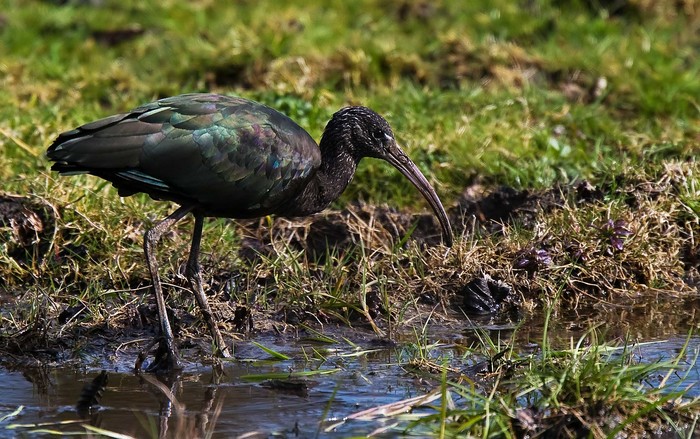
A bare minimum 20 Spoonbills were noted across the past seven days - in Dorset’s Poole Harbour, six were again in Lytchett Bay on 26th, eight were noted off Shipstal Point on 29th and nine were at Arne RSPB on 30th. Four more were seen further along the south coast, at Chichester Harbour (West Sussex) on 28th. A couple of ones and twos were logged elsewhere in the county (at Bracklesham Bay) and in Hampshire (at Farlington and Keyhaven) to the end of the weekend, with one making it in to Kent, seen at Swalecliffe, on 27th.
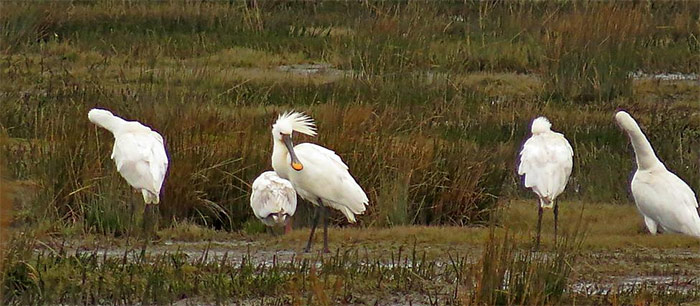
In East Anglia, three were again at Minsmere RSPB on 29th and a couple of singles were recorded along the north Norfolk coast on 27th. The only bird seen was in the north of Ireland, at Quoile Pondage, Strangford Lough (Co. Down) on 27th and again on 31st while to the south one was at Tacumshin (Co. Wexford) to 30th.
Common Cranes were pretty thin on the ground this week, three were noted along Cambridgeshire’s Nene Washes on 25th and four flew south over Minsmere RSPB on 27th.
Through to the weekend, there was not a whiff or a sniff of an vagrant Canada or Cackling Geese so off we go towards the week’s Black Brants.
Two adults were seen on Trimley Marshes (Suffolk) on 28th (presumably one of the two had also been seen at Levington earlier in the week). The same Saturday also saw notice made of an adult Brant at Easington (East Yorkshire) and also at Stiffkey (Norfolk) - the first pure bird in the county for at least a month. Finally, in Kent, an adult was at Hoo St. Werburgh on 30th.
There’s been no news of the vagrant Ross’s Goose in Forth this week, presumably it has departed towards Iceland with its Pink-footed chums in the hopes that it will be on Category next time it comes back to our shores. Fat chance sunshine, fat chance...
The Queen ain’t dead, long live the Queen! Yep, even the most ardent of Republican birders (not the hawkish right-wing gunslingers of the US I hasten to add) will be pleased to hear of the continuing presence of the female King Eider at Ruddon’s Point, Largo Bay (Fife) to the evening of 28th.
On the Wirral, on the sea between Meols and Hoylake, a drake Surf Scoter was a nice (and rather significant) find amongst a vast raft of Commons (estimated at some 15,000 birds) on 25th - reappearing again on 27thand 29th. The significance being that this becomes not only a first for the Wirral recording area but it is also a first county record for Cheshire too. Good work from two patch workers who figured out precisely just how to crack this particular ducky nut.
Along the coast, to the west and in to north Wales, two adult drakes and a single duck Surfie were recorded from Old Conwy on 25th-28th. A lone Scottish drake was seen off the coast of Lothian, at Fisherow and Musselburgh, to 30th and the popular young drake was still on the border of Suffolk & Essex, at Stutton, also to 28th.
Ireland held lone adult drakes at Lahinch (Co. Clare) to 25th, near Annagassan (Co. Louth) on 26th while a new arrival in the flock at Lahinch on 26th was a new first-winter drake.
Four Lesser Scaups were seen through the week - the adult drake in south Wales returned to Cardiff Bay from 25th-27th before trundling back to Cosmeston Lakes on 28th. A second adult drake was noted again on Lough Gara (Co. Sligo) on 27th with a third at Castleplunket (Co. Roscommon) on 30th with the young drake lingering on Martnaham Loch (Ayrshire) to 27th as well. That Roscommon bird, if accepted, will become a first for the county.
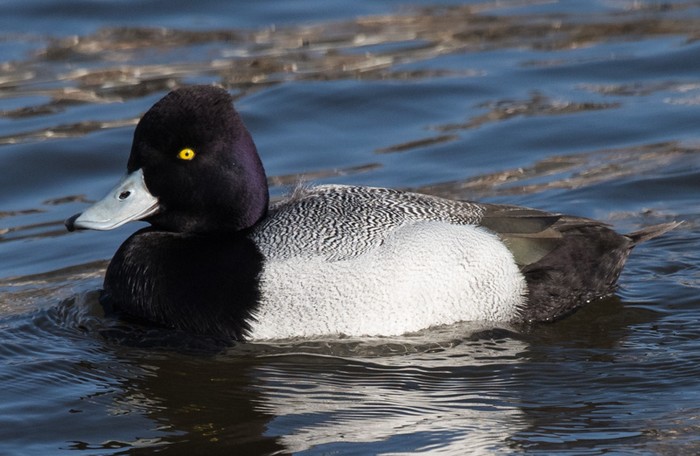
Ring-necked Ducks saw an 4:6 split between the ducks and drakes this week - the former saw singles at Carlingwark Loch (Dumfries & Galloway), Lough Skean (Co. Sligo) and Billing GPs (Northamptonshire), all seen on 27th with the fourth female noted on Loch Scarie, North Uist (Outer Hebrides) from 25th-29th at least.
The sextet of drakes saw one loiter in Aberdeenshire, on Policy Loch then back on Loch of Skene between 25th-31st and remain on Cross Lough, Mullet (Co. Mayo) to 27th. A new bird was seen, also on 27th, at Stainton Quarry (South Yorkshire) while last week’s fresh arrival in Norfolk, at Hardley Staithe reappeared on 28th-29th after several days away (possible dropping down to Lound Water Works, on the Suffolk border on 26th - a “probable” reported there then). Topping things off, the newly found drake at Ballyherly Lough (Co. Down) and Kyle of Durness (Highland) from 29th.
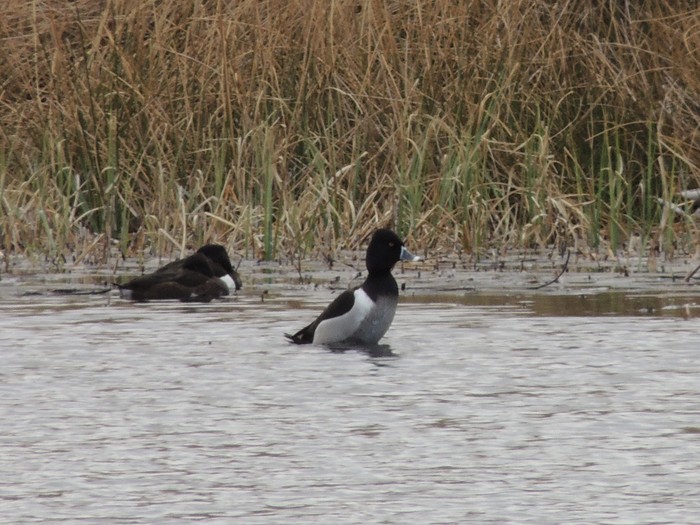
On Orkney, the drake Blue-winged Teal was still sitting pretty at The Shunan, Mainland to 27th while a Green-winged Teal remained on North Ronaldsay to 25th. That Orcadian carolenensis was one of 13 recorded this week, five (or six) of them “new” ones….
Those up-to-half dozen Green-winged Teals were found at Stocks Reservoir (Lancashire) from 25th-27th (and again on 30th), on 28th at Ouse Washes RSPB (Cambridgeshire), Greylake RSPB (Somerset) and also at Port Charlotte, Islay (Argyll & Bute) with the 29th seeing another located at Abberton Reservoir (Essex). The latter date also saw one noted at Loch Gruinart RSPB, again on Islay, potentially the second for the island in 24 hours.
The remaining half a dozen individuals were logged as still present on Tresco’s Great Pool on 25th; at The Gearagh, near Macroom (Co. Cork) to 26th and at Ballycarry Bridge, Larne Lough (Co. Antrim), Loch Sandary, North Uist (Outer Hebrides), Caerlaverock WWT (Dumfries & Galloway) and Dorman’s Pool (Cleveland) all through to 29th.
Three of last week’s drake American Wigeons remained into this week - on the Taw Estuary (Devon) to 25th and at Holme Pierrepont (Nottinghamshire) and Normanton (West Yorkshire) both to 30th - while a “fresh” drake (and a presumed female) were seen on North Uist, at Loch nam Feithean on 28th.
Finally, news that the drake Black Duck was still being noted on Tresco this week - still around the Abbey Pool on 25th.
For another March week, the wintering Irish first-winter Lesser Yellowlegs on the Rogerstown Estuary through to 29th was the only shorebird to report.
In Wales, in Glamorgan, the two adult Bonaparte’s Gulls were being watched around Cardiff Bay through to 28th at least (with one to the end of the month). They made up the week’s total of five (down one on the previous seven days) - the third adult of the past few days was found at Loch Caolisport, Ormsary (Argyll & Bute) on 26th.
This bird comes hot on the heels of the new first-winter seen in the county last week (over on Tiree) and it could be a fresh arrival too - the area around Ormsary is relatively well-watched (for a fairly remote site) and there’s been almost eight weeks between this adult Bonaparte’s and the adult seen at nearby Loch Gilp on Febnruary 4th.
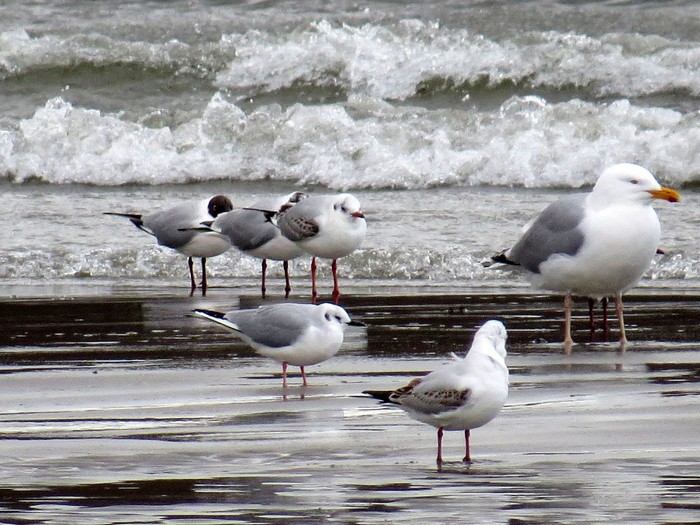
The first-winter Bony’s remained at Tramore (Co. Waterford) to 29th, with the trixy young bird reappearing again in Dorset, at Radipole Lake RSPB on the same date, popping along to Lodmoor RSPB the same night before another visit to Radipole on 30th-31st.
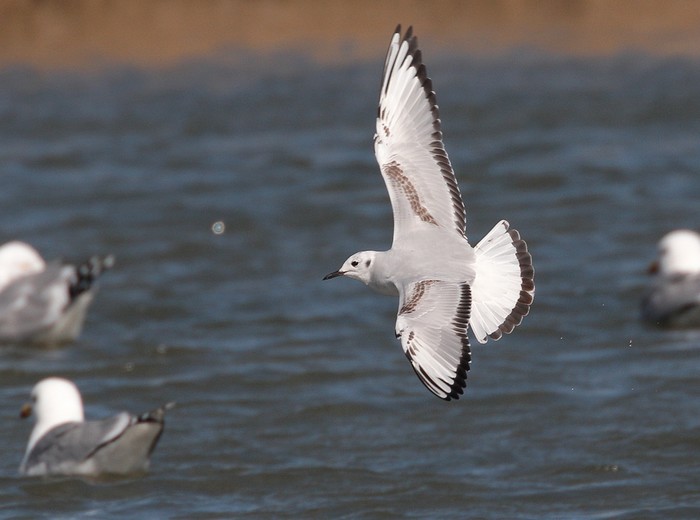
Seen daily to 31st, the first-winter Laughing Gull at New Brighton, on the Wirral - clocking up almost two months on site in the process.
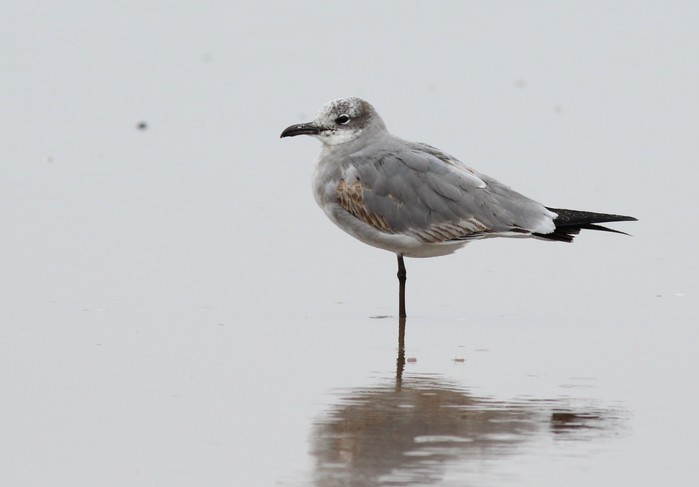
Tweleve of Ireland’s 18 Ring-billed Gull were split between just three locations this week - five adults were counted at Merrion Gates (Co. Dublin) on 26th while the 27th saw four (two adults, single first- and second-winters) noted at Nimmo’s Pier (Co. Galway) and three (two adults and a first-winter) at Blennervile (Co. Kerry).
On the east coast, an adult and first-winter Ring-bill were at Cruisetown (Co. Louth) on 26th while single birds were at Cuskinny Marsh (Co. Cork), Dungarvan (Co. Waterford) and at Wexford Harbour (Co. Wexford), all on 28th, with a fist-winter again at Ennis (Co. Clare) on 30th.
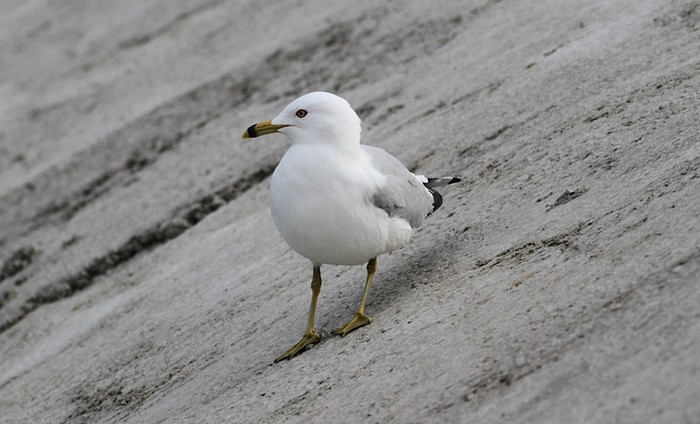
In Scotland, a first-winter remained around North Uist, at Balranald RSPB to 30th while on mainland, the adult was still in the Highlands, at Dingwall, to 28th. A further Celtic first-winter was seen again on the Gann Estuary (Pembrokeshire) on 29th.
Northamptonshire’s first Ring-billed Gull in almost two years was found at Boddington Reservoir on the evening of 27th - the first-winter returning to the roost the following evening too. That new bird was one of just two seen in England across the past seven days - the second was a second-summer on the River Axe, at Seaton (Devon) on 30th.
Numbers of Glaucous Gulls recorded this week hovered just above the 40 mark (just as last week) - 20+ of those were seen around nine Scottish counties and regions, with seven on the Hebrides and four in Highland. Ireland managed 13 birds in all, six of those seen on the Mullet, in Mayo, on 27th. Just nine birds were seen across England, with four or five for Wales.
There’s certainly one Glauck of the Week that’s worth a little mention - an adult that was trapped and ringed on Pitsea Tip on 21st (where it was reidentified from photos) was seen on 31st at Stanwick GPs (where it seems to have been noted daily from 24th). An interesting NW’ly “internal” movement - which, along with numerous others sites that have proven interchange with the Essex gulling site, puts Stanwick in line for a Thayer’s or Slaty-backed Gull one day...
Iceland Gull figures tumbled from over 140 last week to around 110 birds in all for the past seven days - spread around 32 British and Irish counties. Scotland dominated again, with 65+ logged in total, at least 18 of them seen on the Outer Hebrides including 13 (12 of them juveniles) still in the harbour at Stornoway, Lewis, on 25th. A further 14+ were seen in Argyll & Bute, six different birds noted around Loch Caolisport on 26th-27th (five of them juveniles). Highland managed 10 while on Shetland, four were seen on Fair Isle on 28th and seven visited Shetland Catch, in Lerwick, on 30th.
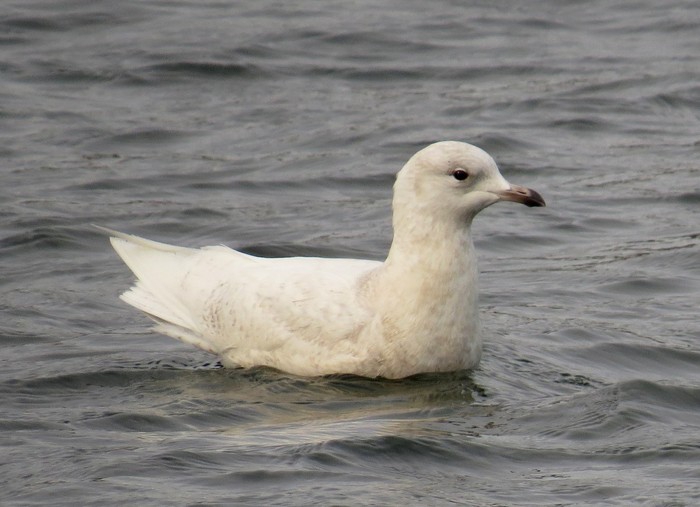
Sixteen Icelands were spread thinly across 11 Irish counties, while in England up to half a dozen were seen in northeast England, with four in Cheshire (the northwest’s only birds) with ones and twos elsewhere through the Midlands, East Anglia all the way down to the southwest. Wales managed a further five singles, including two in Pembrokeshire on 29th.
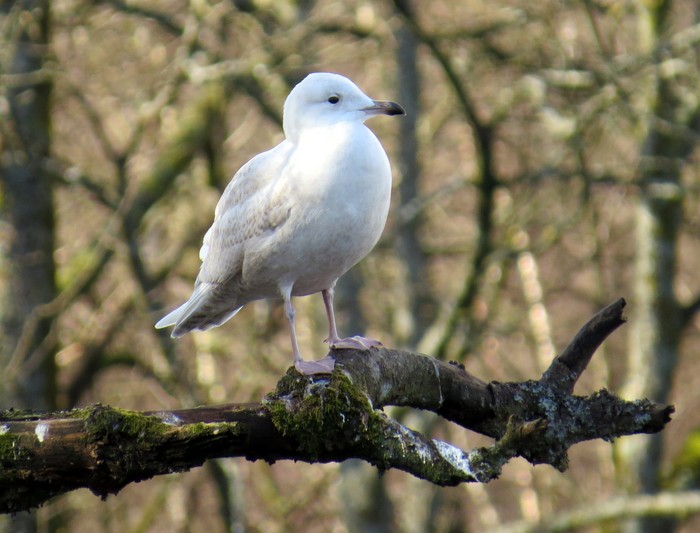
In amongst all the notable birds at Loch Caolisport in Argyll on 26th was a juvenile Kumlien’s Gull, one of just three noted this week. Another juvenile was still on Lurgan Park Lake (Co. Armagh) to 29th and an adult was photographed at South Milton Ley (Devon) on 28th.
The only White-tailed Eagle this week remained in County Durham, near Stanhope - seen daily from 27th-31st - giving some startling views in the process.
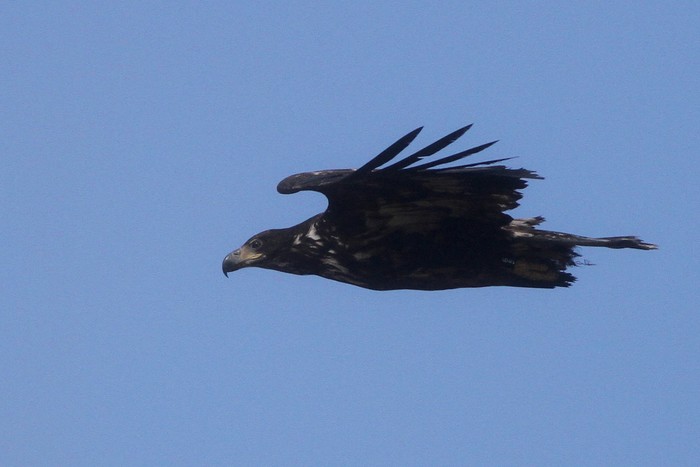
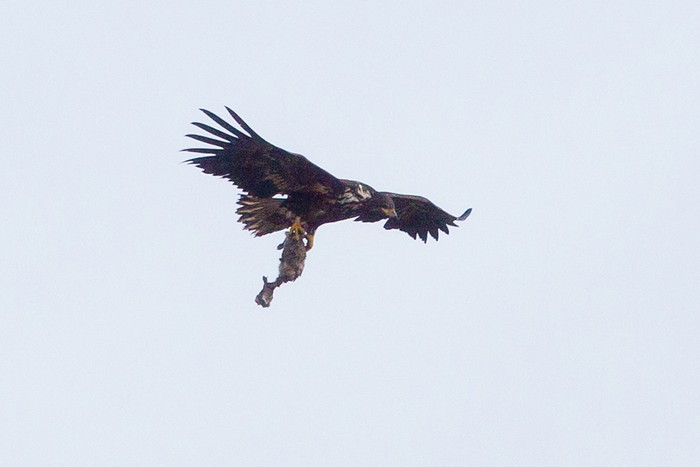
Two juvenile Rough-legged Buzzards were logged at Norfolk’s Burnham Overy area on 27th with others remaining in the east of the county, in the Waveney Forest, to 25th and again at Breydon Water and Halvergate Marshes on 30th.
A new juvenile Rough-leg was noted in Highland, at Lochindorb on 29th while there were just two more recorded elsewhere - a juvenile was at Rudland Rigg (North Yorkshire) on 27th and the young bird on Wallasea Island (Essex) remained to 28th.
The only really new arrival this week was the second March Alpine Swift of 2015 - found not far from Gatwick Airport, at Crawley (West Sussex) on 28th, showing on + off in the area (lodging upon the Virgin Atlantic building from time to time - other airlines are available and all that…) through to 30th.
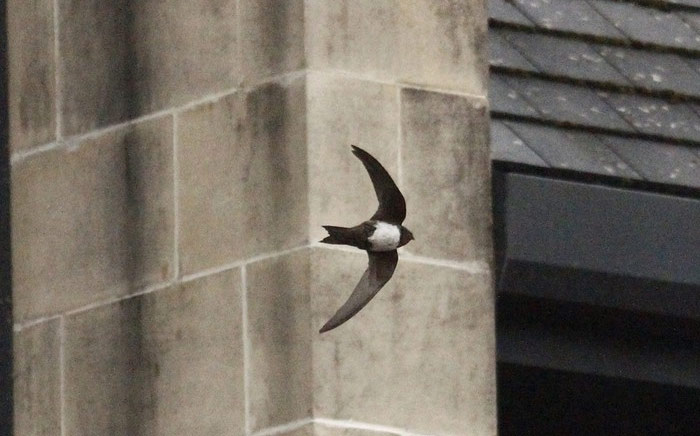
This particular zoomer proved rather popular given where it was, plenty of birders in southeast England and with little else to play with, this impressive performer was vying for bird of the week.
Two of the five wintering Little Buntings remained in to March’s final seven days - still to the east of Gulval, near Marazion (Cornwall) to 27th and at Forest Farm, near Cardiff (Glamorgan) to 31st.
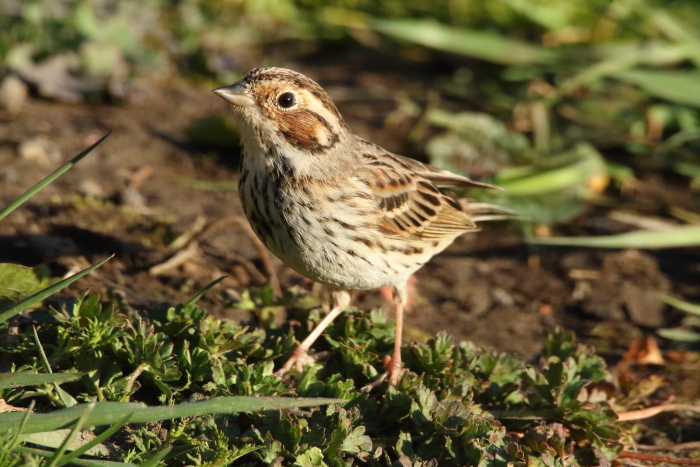
Devon’s two Penduline Tits stayed put at Darts Farm RSPB through to 31st while further wintering options included three Yellow-browed Warblers - still at Sedgeberrow sewage works (Worcestershire) to 28th and Branscombe sewage works (Devon) to 29th with a new individual noted in Birmingham, at Hay Mills, briefly in the early morning of 26th; lone Richard’s Pipits remained at Breydon Water (Norfolk) on 25th and Shell Ness/Swale NNR (Kent) to 29th with 25th seeing further notice given of the continuing presence of the Black-bellied Dipper at Harpham (East Yorkshire).
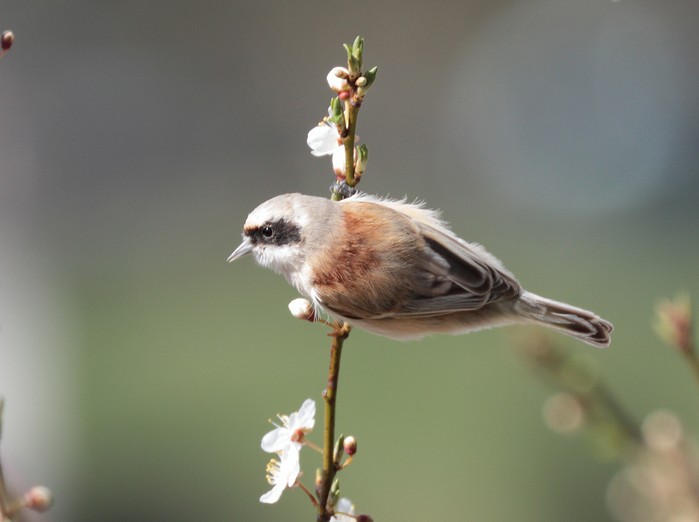
After a significant late-winter peak of 37 Great Grey Shrikes last week, there’s been a drop to 25 in all across this week. In Scotland, two singles were seen on the Shetland Mainland, still at Levenwick, on 25th and in Highland, at Gills on 29th. In northeast England, singles lingered in South Yorkshire, at Thorne Moors NNR to 25th and Midhope Reservoir to 29th, at Heslington (North Yorkshire) to 30th and in County Durham, at Stanhope to 30th. New was a bird at Skellington (Lincolnshire) on 28th.
Three Great Grey Shrikes were still in the northwest of England, two at Dalton Crags (Cumbria) to 27th (one there to 30th) with the county’s third again at Bassenthwaite to 26th. A further double remained at Beeley Moor (Derbyshire) with an adult male at the far southern end of the Midlands, still at Crabtree Hill in the Forest of Dean (Gloucestershire) to 25th and in the far west of the area, a new bird was on Brown Clee Hill (Shropshire) on 30th.
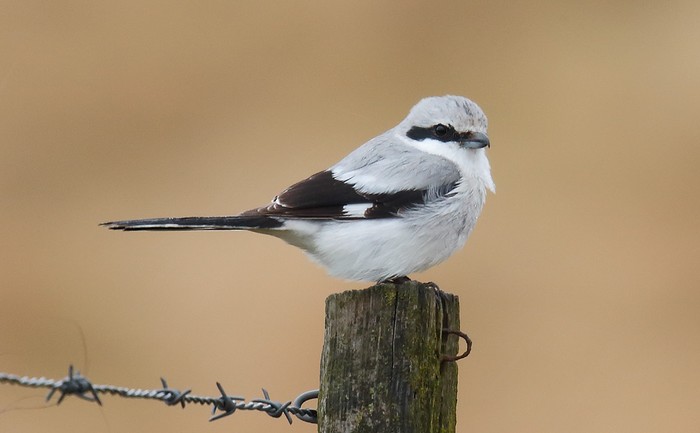
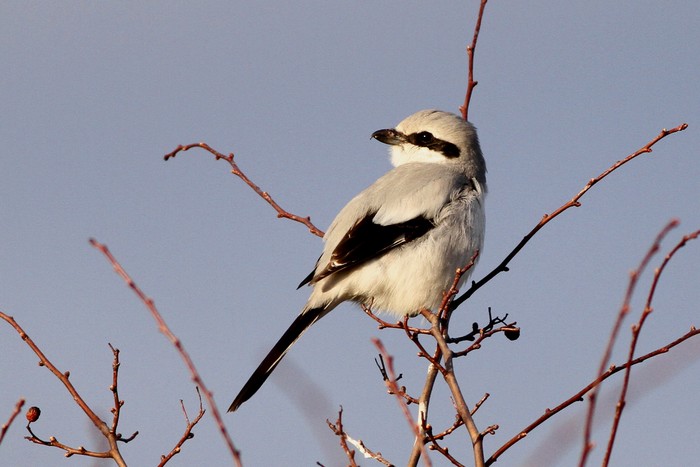
Across the border in Wales, Powys held on to the two birds noted there last week - at Llandefalle to 25th and Llandegley to 30th with further individuals remaining at World’s End (Denbighshire) through to 27th and Cross Forest Inn (Ceredigion) to 30th.
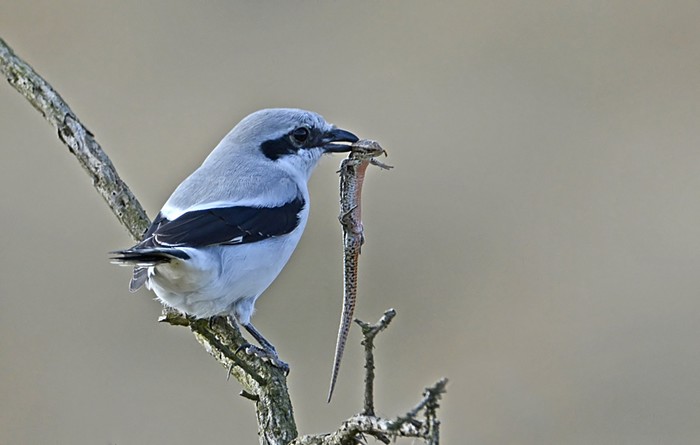
TwoGreat Grey Shrikes was seen in southwestern England, on Dartmoor around the Soussons plantation to 26th at least and Woodbury Common on 27th, while the southeast yielded four birds in all - at Chilham (Kent) to 27th, at the Milkham Inclosure, New Forest (Hampshire) to 28th, again at High and Over (East Sussex), also to 28th and in Surrey at both Hankley Common and nearby Thursley Common to 28th as well.
The final birds of the week were East Anglian’s trio - two remained in Norfolk, on Roydon Common and Grime’s Graves, both to 31st, while in Suffolk one was still on Upper Hollesley Common, not too far from Woodbridge, through to 26th.
The recurring theme of the winter has been the dismal lack of Waxwings and with April knocking on the door, that certainly wasn’t going to change now. That said, a handful of double figure flocks were recorded this week - 27 were in Cults (Aberdeenshire) on 25th with the same county hosting a second flock of 21 at Kincorth between 27th-29th while in Suffolk, 11 were seen in trees at Kesgrave on 29th (with nine still there to 31st) and 13 were in Ipswich on March’s final day. Seven were at Guisborough (Cleveland) on the same date, but it was singles elsewhere, very thinly spread from Suffolk to Orkney.
We close with the male Two-barred Crossbill that was noted again at Speech House Woodland in the Forest of Dean on 25th - wouldn’t it be cool if he had a mate tucked away somewhere…
That’s that for the final time for March 2015 - we move in to April with anticipation heightening as the transition towards spring megas goes up a notch or two.
…and even if it isn’t a mega, there could be some entertaining “mini-megas” to revive flagging spirits from the March malaise mentioned here last week.
If the weather is kind (and that’s a big “if” at such a temperamental time of year) who knows what could pop up out of the blue - which is rather apt as April 2nd has produced two relocating migrant Red-flanked Bluetails in recent years; on Out Skerries in 2007 and at Durlston Country Park in 2011 (they make up half of the accepted April records to date).
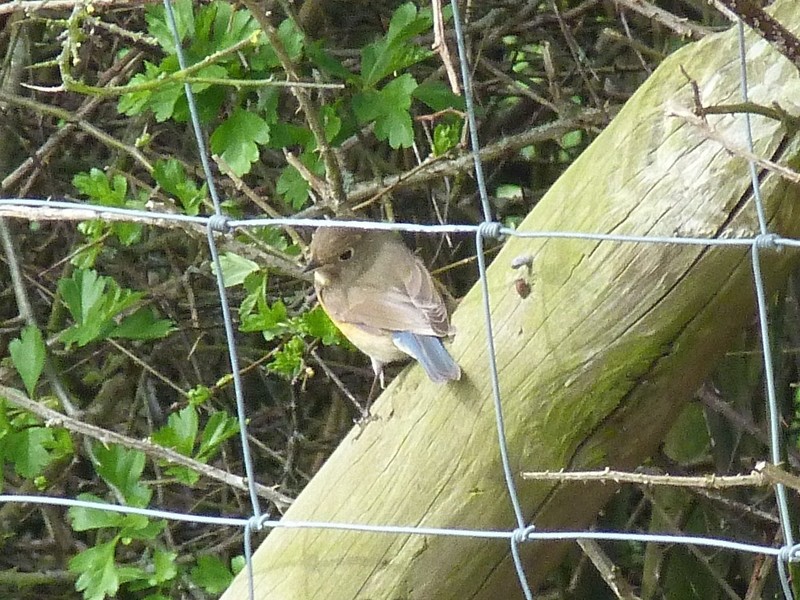
April 2nd boasts a hearty list of grand birds, including Britain’s first Calandra Lark, found on Portland in 1961, while still on the mega lark-y front, April 4th 1965 produced a Crested Lark at Marazion.
Odds-on favourite must surely remain Gyrfalcon (historically recorded daily between April 1st-6th, totalling 24 acceptances in all, with the 2nd being most productive with eight birds in all - and with winds right out of Greenland as the week closed…well...).
If there was a flop of warm southerly, how about (for the nth week in a row) Great Spotted Cuckoo. Pop in other early April long-shots such as Killdeer, Pallid Harrier and maybe the first Iberian Chiffchaff, well there’s lots to think about.
That said, I fancy a little tickle on the oft-ignored Short-toed Treecreeper. Generally located in a net, there are a few in-field finds - which takes no end of nous and skill this side of the English Channel. There are 26 acceptances (of 27 birds), the most recent of which was at Samphire Hoe CP on March 10th 2012.
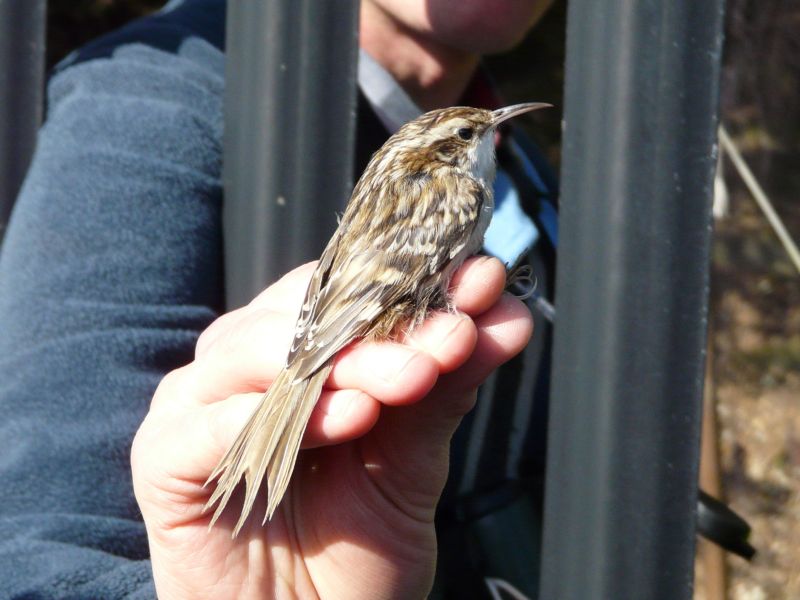
April has managed four birds, three of them falling within the dates that lie immediately ahead of us; one was trapped at Sandwich Bay on April 14th 1974, another was found at Dungeness (‘natch) on April 3rd 1994 and, most recently, came a very popular bird in Essex, at Bradwell-on-Sea between April 6th-10th 2005.
That Bradwell bird would have been the undoubted star of that review week had it not been for the most famous April Fools Day bird in twitching folklore - the Shugborough Belted Kingfisher which sent shockwaves of almost unmatched excitement through the listing community 10 years ago.
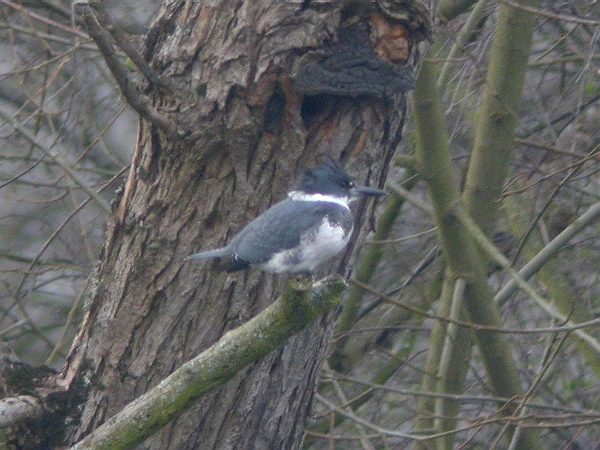
It’s traditional to mention that bird here now and there’s no need to change things now - and let’s remember how it sped north via East Yorkshire (on 2nd) to reappear in Aberdeenshire (on 4th). Truly extraordinary…
You have to wonder what could ever top that - well, if you’re 50 or below, that’s easy. Really really easy…
Shake a leg back in time to the cliffs near Hastings on April 6th 1977.
Wallcreeper.
That was 38 years ago - the last one anywhere was 30 years ago this May.
How long? Too long, that’s how long…
Just don’t be asleep in the car when it flies out to sea, never to be seen again…
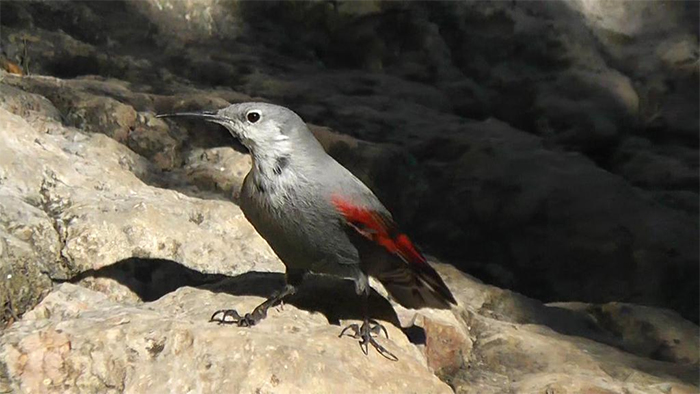
Mark Golley
01 Apr 2015






